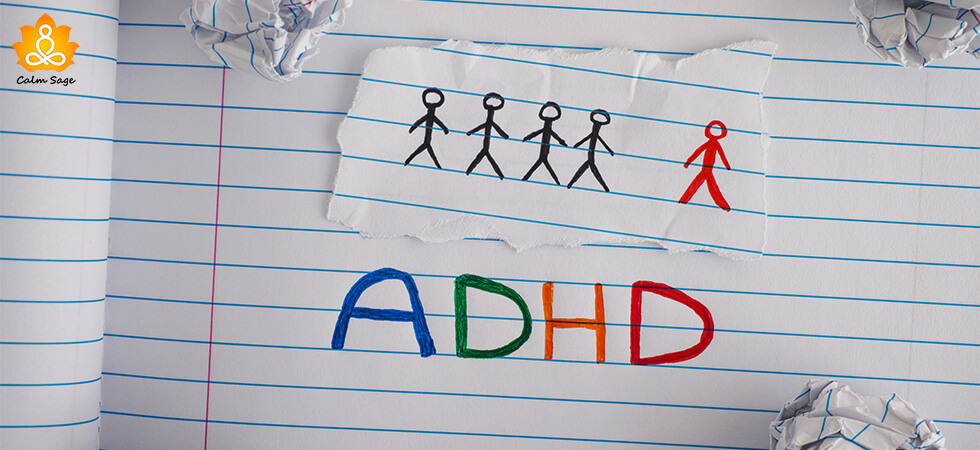ADHD Combined Type: Understanding The Most Common Type OF ADHD

Attention deficit hyperactivity disorder (ADHD) is a mental health disorder characterized by the symptoms of hyperactivity-impulsivity and inattention. The symptoms of ADHD can occur together or one by one. So, there are three types of ADHD in adults and kids which are:
- Inattentive type
- Hyperactive-impulsive type
- Combined type
In this blog, we will be taking a deep look at the combined type of ADHD which is characterized by symptoms of hyperactivity, impulsivity, and inattention. Out of all types of ADHD, the combined type of ADHD is one of the most common ADHD.
Research shows that approx. 70% of adults diagnosed with ADHD are identified through the combined type. In the next section, let us take a look at what combined ADHD type is.
What is a Combined Type ADHD Presentation?
ADHD combined type presentation is diagnosed when someone continuously experiences both types of ADHD symptoms (hyperactivity-impulsivity and inattention) for more than 6 months. Experiencing combined type ADHD does not mean that you might be having severe symptoms as compared to other types of ADHD.
It simply means that your symptoms are a combination of both types of ADHD (predominantly hyperactive and predominantly inattentive). For example, people experiencing combined type might experience some symptoms of predominantly hyperactive type and some symptoms from the predominantly inattentive type. Overall, it means being evenly distributed by the symptoms of two types of ADHD.
Symptoms of Combined Type ADHD
The symptoms of combined ADHD are the combination of inattentive type and hyperactive-impulsive type. Psychologists state that when a child or adult experiences six or more signs from each type, they are diagnosed with combined type ADHD. Below listed are some of the common symptoms of both types of ADHD:
Hyperactivity-impulsivity symptoms
- Blurting out replies directly
- Constantly interrupting others’ conversations
- Fidgeting or stimming
- Impatient
- Non-stop talking
- Unable to focus or remain seated at the same place
Inattentive symptoms
- Does not listen to talks or instructions
- Easily distracted
- Forgets or loses things easily
- Unable to complete assignments or tasks
- Unable to follow instructions
As I mentioned above, a person is diagnosed with a combined type only when they display at least six or more symptoms from both types. Moreover, to be diagnosed with ADHD, a person must have:
- Hyperactive-impulsive or inattentive symptoms before the age of 12.
- Symptoms must be present in two or more important backgrounds such as work, school, family, or other important activities
- Symptoms must interrupt the overall quality of life or regular functioning
- Symptoms must not collide with other mental health issues such as anxiety disorders, personality disorders, or dissociative disorder
Causes and Risk Factors of Combined Type ADHD
As of now, there’s no exact cause known behind the development of ADHD. However, studies show that genetics and environmental factors play an important role. Below are some of the risk factors associated with all types of ADHD presentations:
- Environmental factors: Exposure to toxins or other environmental factors during pregnancy or infancy can increase the risk of developing ADHD in children.
- Genetics: As mentioned above, genetics play an important role in the development of ADHD in children since genes related to ADHD run through heredities or families. There are several evidence-based studies available on the internet that show the connection between ADHD and genetics.
- Premature delivery or low birth weight: Research shows that premature babies or babies born with low birth weight can be at a high risk of developing ADHD in babies. if not during infancy, toddlerhood, or adolescence, they can develop ADHD in adulthood.
- Substance abuse: Pregnant mothers who smoke or drink alcohol put their children at risk of developing ADHD. apart from this extensive substance abuse during pregnancy can also be linked to the development of ADHD
Diagnosis of Combined Type ADHD
ADHD and its presentations are diagnosed in the same manner which is followed by a detailed evaluation carried out by a registered mental health professional. Along with evaluation, a mental health professional also might carry out:
- Clinical information such as your medical history, childhood experiences, and more
- Assessment (screening, attention and distraction tests, memory testing, and others)
- Detailed interviews with other family members or parents
The diagnosis of ADHD is made under the criteria outlined in the Diagnostic and Statistical Manual of Mental Disorders 5th Edition (DSM-5). You or your child are likely to get a diagnosis for the ADHD presentation which can be either hyperactive-impulsive, inattentive, or combined type.
For more information and diagnosis, you can connect with a certified and experienced mental health professional through online platforms, refer to the below links:
Treatment of Combined Type ADHD
Coming forth to the treatment process of the combined type of ADHD, we need a treatment process that can address both types of symptoms of combined ADHD. Generally, medications and psychotherapy are known to be the frontline treatment methods for combined-type ADHD.
1. Medication
Medications help in improving inattentiveness and hyperactivity-impulsivity-associated symptoms along with physical coordination. Below are some of the commonly prescribed medications for ADHD:
- Psychostimulants
- Non stimulant drugs
2. Psychotherapy
Psychotherapy is the most effective treatment method for ADHD as it helps in changing behavior and breaking the problematic behaviors. It helps in establishing positive and healthy behaviors in children. Below are some of the commonly prescribed psychotherapy options for combined-type ADHD in adults and kids:
- Cognitive behavioral therapy (CBT): CBT helps in removing negative or distracting behaviors by establishing positive behaviors in children. CBT can also help with mood swings, anxiety, and depression-related symptoms.
- Family therapy: Family therapy can be really beneficial if your child is recently diagnosed with ADHD or its subtypes. It helps in improving family bonding and communication.
How to Help Someone with Combined Type ADHD
Strategies to help a child with ADHD
- Develop a strict routine and schedule
- Be consistent with routine
- Reward good and positive behavior
- Try to bond with children with ADHD-related activities
- Communicate regularly with your children
- Track symptoms and connect with a mental health professional in cases of confusion
- Try to minimize distractions
- Create healthy and positive experiences
Strategies to help an adult with ADHD
- Develop and maintain a strict routine
- Focus on healthy eating and sleeping
- Use reminders for maintaining work and school
- Avoid multitasking
- Focus more on short-term goals
Frequently Asked Questions
1. How do combined ADHD progress?
In the DSM-5, the subtypes are represented as presentations. Researchers established that ADHD’s severity and presentation can change with age, personality, and setting. Meanwhile, predominantly hyperactivity presentation is referred to as the early developmental stage of the combined type. Additionally, people diagnosed with the hyperactivity ADHD can develop symptoms associated with inattention between three to five years. Symptoms associated with impulsivity and hyperactivity reduce with age.
2. Can you get rid of combined type ADHD?
Medications and psychotherapy are generally prescribed to treat ADHD. However, there’s no cure for ADHD but the research shows that one-third of people diagnosed with ADHD outgrow their symptoms in adulthood.
I hope this blog helps you understand combined-type ADHD. For more such content, connect with us through all social media platforms.
Thanks for reading!




















